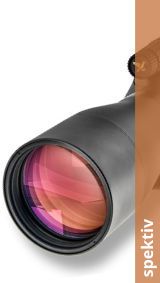The use of aspherical lenses leads to a reduction in the overall length of the binoculars and in some cases to a significant reduction in weight.
The Interpupillary distanceThe interpupillary distance is the optimum distance between the eyepiece lens and the pupil of the eye. " More info is the optimum distance between the eyepiece lens and the pupil of the eye.
For seeing in the TwilightFor night glasses, which are ideal for sitting game and as sow glasses, the light intensity is the most important feature. " More info (twilight vision) is of great importance, in addition to the Twilight numberIn order to be able to recognise details over long distances even in twilight, binoculars with high magnification and corresponding twilight performance (e.g. 10x56 or 8x56) are recommended. " More infoalso the binoculars Exit pupilIn addition to the twilight number, the binocular exit pupil at the eyepiece of the binoculars is also very important for seeing in twilight (twilight vision). " More info on EyepieceThe eyepiece is the lens group of an optical system that faces the eye. The eyepieces consist of several separate lenses - achromats (3-6 individual lenses). " More info of the binoculars.
1 MOA (one minute of angle or minute of angle) is 1/60th of a degree of angle.
With the help of an already simple coating, this loss of Light transmissionLight transmission is the ability of optical glass or optical systems to "let through" as many light rays as possible. " More info (transmission loss) to 1.5%, for example. This already increases the amount of light that reaches your eyes to around 80%.
The image produced by a lens objective has a spherical error by nature. This error can be corrected using appropriate optical elements.
The essential DifferenceDifference and comparison between Porro prisms and roof prisms The design of binoculars is always determined by the type of prism used. Porro prism in binoculars Binoculars with a porro prism design can be recognised by their relatively low height and wide design. Advantage: The greater distance between the two lenses promotes spatial vision. A graphic illustration and further details on the design of porro prisms can be found here! Roof prism with " More info from the Roof edgeThe main difference between the roof edge and the Porro system is the roof edge, where one of the reflective surfaces resembles a house roof (see picture below). " More info to the Porro system is the roof edge, where one of the reflective surfaces resembles a house roof (see picture below).
In order to be able to recognise details over long distances even in twilight, binoculars with a high MagnificationThe magnification of a binocular model is perhaps the most misunderstood feature. High magnification can be useful! " More info and corresponding Twilight performanceIn order to be able to recognise details over long distances even in twilight, binoculars with high magnification and corresponding twilight performance (e.g. 10x56 or 8x56) are recommended. " More info (e.g. 10×56 or 8×56).
At the ReticleDifferent reticles for riflescopes. DDoptics uses the following 3 reticles for its riflescopes, depending on the target optics: " More info in the 1st image planeWhen the reticle is in the 1st focal plane, the reticle simply enlarges with the magnification adjustment. " More info the reticle simply increases with the magnification adjustment.
The ReticleDifferent reticles for riflescopes. DDoptics uses the following 3 reticles for its riflescopes, depending on the target optics: " More info in the 2nd image plane, the view through the target optics does not simply zoom in.
Unfortunately, fine details such as the light unit are often skimped on. And this has far-reaching consequences! Not so with DDoptics.
The Dioptre correctionThe dioptre correction on the eyepiece is used to compensate for different visual acuities of the eyes. " More info on the eyepiece serves to compensate for different visual acuities of the eyes.


















